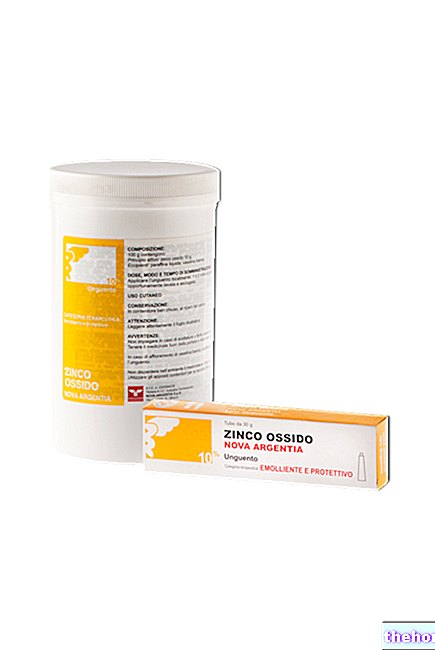
What is Trobalt - retigabine?
Trobalt is a medicine that contains the active substance retigabine. It is available in tablet form (round violet: 50 mg; round green: 100 mg; oblong yellow: 200 mg; oblong green: 300 mg; oblong violet: 400 mg).
What is Trobalt - retigabine used for?
Trobalt is used for the treatment of partial seizures (seizures) with or without secondary generalization in adults. It is a type of epilepsy in which excessive electrical activity in one part of the brain causes symptoms such as sudden spasmodic movements of one part of the body, impaired hearing, smell or vision, numbness or sudden feelings of fear. Secondary generalization is occurs when excessive electrical activity subsequently reaches the entire brain. Trobalt should only be used as an adjunct to other antiepileptic medicines.
The medicine can only be obtained with a prescription.
How is Trobalt used - retigabine?
Trobalt treatment starts with one 100 mg tablet three times a day for one week; Thereafter the dose is increased by 50 mg each time on a weekly basis, according to the patient's response. The recommended maintenance dose is between 600 mg per day and a maximum of 1 200 mg per day.
Older patients and those with moderate or severe liver or kidney problems should be given lower doses. For more information on how to use Trobalt, including detailed recommendations for different patient groups, please refer to the Summary of Product Characteristics (included in the EPAR).
How does Trobalt - retigabine work?
The active substance in Trobalt, retigabine, is an anti-epileptic medicine. Epilepsy is caused by excessive electrical activity in the nerve cells of the brain. Trobalt exerts an effect on the potassium channels located on these cells. These channels are pores that allow potassium to enter and exit cells and play a role in terminating electrical impulses. Trobalt works by keeping potassium channels open; in this way it interrupts the further transmission of electrical impulses and thus prevents the occurrence of epileptic seizures.
How has Trobalt - retigabine been studied?
Trobalt's effects were first tested in experimental models before being studied in humans.
Trobalt has been compared with placebo (a dummy treatment) in three main studies involving a total of 1,244 patients with seizures not adequately controlled by other antiepileptic medicines. Trobalt at a maintenance dose of 600, 900 or 1 200 mg per day or placebo was taken for 8 weeks in the first study and for 12 weeks in the other two studies. In the first study, the main measure of effectiveness was the change in the number of seizures per month. In the other two studies, the main measure of effectiveness was the number of patients in whom the number of seizures was at least halved.
What benefit has Trobalt - retigabine shown during the studies?
Trobalt was more effective than placebo in reducing the number of seizures. In the first study Trobalt at 900 mg and 1,200 mg per day was more effective than placebo and reduced the number of seizures per month by 29% and 35% respectively. In contrast, there was a decrease of 13% in the placebo group. The study did not give conclusive results on the effect of Trobalt at 600 mg per day. In the second study, seizures were at least halved in 39% (61 out of 158) of patients treated with Trobalt at 600 mg per day and in 47% ( 70 out of 149) of those given 900 mg per day, compared with 19% (31 out of 164) of patients in the placebo group. In the third study, seizures were at least halved in 56% (66 out of 119) of patients who took Trobalt at 1,200 mg per day, compared with 23% (31 out of 137) of patients taking placebo.
What are the risks associated with Trobalt - retigabine?
The most common side effects seen with Trobalt (seen in more than 1 in 10 patients) are dizziness, sleepiness and fatigue. For the full list of side effects reported with Trobalt, see the package leaflet.
Trobalt must not be used in people who may be hypersensitive (allergic) to retigabine or any of the other ingredients.
Why has Trobalt - retigabine been approved?
The CHMP decided that Trobalt's benefits are greater than its risks and recommended that it be given a Marketing Authorization for the medicine.
What measures are being taken to ensure the safe use of Trobalt - retigabine?
The company that makes Trobalt must ensure that doctors who are expected to prescribe it receive a packet containing important safety information, including information on some less common side effects of the medicine, such as problems with passing urine, prolonged QT interval (a " altered electrical activity of the heart) and visual or auditory hallucinations.
Other information about Trobalt - retigabine
On March 28, 2011, the European Commission granted Glaxo Group Limited a "Marketing Authorization" for Trobalt, valid throughout the European Union. The "Marketing Authorization" is valid for five years, after which it can be renewed.
For more information about Trobalt therapy, read the package leaflet (included with the EPAR) or contact your doctor or pharmacist.
Last update of this summary: 02-2011.
The information on Trobalt - retigabina published on this page may be out of date or incomplete. For a correct use of this information, see the Disclaimer and useful information page.




























